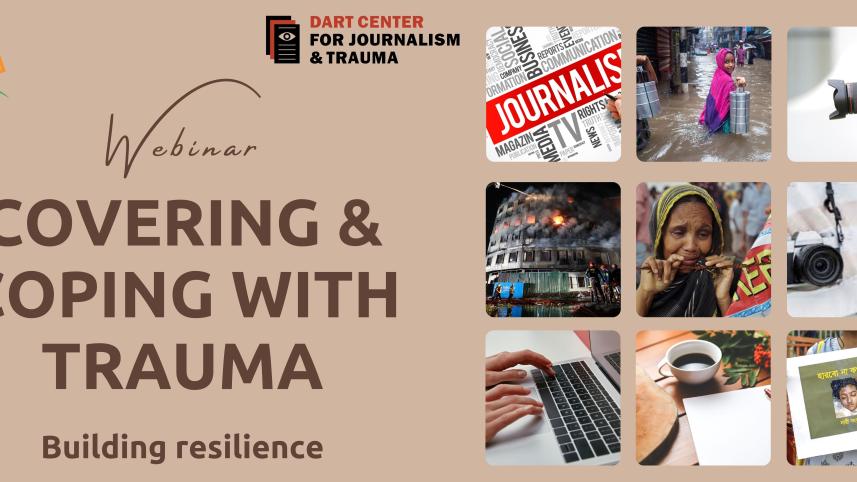‘Journalists must be protected against psychological trauma’

Journalists' safety is not limited to physical security but must include protection against psychological injury resulting from exposure to violence, conflict, disaster and tragedy, experts said at a webinar today.
Center for Communication Action Bangladesh (C-CAB), in partnership with Dart Center for Journalism and Trauma, organised the webinar on "Covering and Coping with Trauma: Building Resilience Through Trauma-informed Journalism".
Dart Centre Asia Pacific Managing Director Dr Cait McMahon delivered the keynote presentation at the webinar.
"It is natural for journalists who cover traumatic events to experience psychological reactions like mood swings, sleeplessness, depression and disorientation, which in the long run can affect their work and personal lives. But these issues can be overcome using peer support networks and self-care techniques," she said.
"Journalists must also be trauma-aware to protect and empower victims of violence and tragedy whom they are interviewing and covering," she added.
"There should be a conversation around journalists' mental health needs and the newsroom should build guidelines and support mechanisms to help journalists who were facing psychological trauma," said C-CAB Executive Director Syed Zain Al-Mahmood.
"C-CAB would work with newsrooms to bring trauma journalism resources to local journalists," he added.
C-CAB has localised Dart Center's style guide for trauma-informed journalism which contains guidance on best practices in trauma reporting.
Frances Jacks, head of media and communications at the British High Commission; Zafar Sobhan, editor, Dhaka Tribune; Ayesha Kabir, head of English web at Prothom Alo; and Jude W Genilo, professor, media studies and journalism, University of Liberal Arts spoke at the webinar, among others.
Around 90 journalists from print, electronic and online media attended the main presentation.
 For all latest news, follow The Daily Star's Google News channel.
For all latest news, follow The Daily Star's Google News channel.
Comments